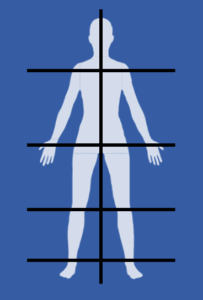I have a cranky right knee. I’ve had it for years. On occasion, the left knee gets in on the pain action, but it pales in comparison to the right. My right shoulder gets a little cranky now and then, too. In times past, when the pain reached a level that impaired normal activities, I’d head to the doctor or physical therapist to get some help. I’d pursue the recommended course of action until the pain subsided and then go back to business as usual.
Though I’ve tried to exercise throughout my adult life, time spent sitting at a desk or conference room table and watching TV or reading at day’s end far outpaced time spent in motion. The temptation to veg out after a hard day often won out over the better angels encouraging a trip to the gym. I wasn’t alone. The CDC estimates that fewer than 1 in 4 Americans over the age of 18 meets the Physical Activity Guidelines for both aerobic and muscle-strengthening activity. Along with other health-related maladies, a general lack of activity combined with poor posture can cause the body’s skeletal frame to get out of alignment.
 The spine and joints provide the infrastructure on which soft tissues hang. They also enable us to perform a range of motion – bending, twisting, turning to the right or left, lifting legs and arms, etc. The optimal frame envisions a spine that stands perpendicular to the ground and shoulder, hip, knee, and ankle joints parallel to the ground. It also contemplates flexible joints that support a full range of motion. Our Western lifestyles renders many of us bent out of shape:
The spine and joints provide the infrastructure on which soft tissues hang. They also enable us to perform a range of motion – bending, twisting, turning to the right or left, lifting legs and arms, etc. The optimal frame envisions a spine that stands perpendicular to the ground and shoulder, hip, knee, and ankle joints parallel to the ground. It also contemplates flexible joints that support a full range of motion. Our Western lifestyles renders many of us bent out of shape:
- Shoulders and/or hips hitched forward
- Back swayed with belly forward
- Twisted with one shoulder and/or hip forward and lower than the other
- Stiff jointed
My brother put me on to The Egoscue Method of Health Through Motion by Pete Egoscue. As an anatomical functionalist, Pete conducted the research and developed the exercises to transform our “bent and broken” bodies back to their natural state of health. He says:
“We must learn to recognize that the pain we feel, the stiffness, lack of energy, the poor balance, the erratic concentration, or the inability to hit the long ball or short putt aren’t caused by the passing years, a second-rate golf club, or a bad day at the office. These are symptoms of dysfunction brought on by lack of motion.”
To that end, his book provides a brief education on skeletal alignment, discusses the common ways in which we become unhinged, and provides exercises to ameliorate our maladies. It also provides a testimonial by famed golfer Jack Nicklaus.
After reading the book, I opted to get a detailed evaluation by an Egoscue Specialist 6 years ago. He took photos of my front, back, and sides and overlaid markers showing what optimal alignment looks like. I was shocked by how twisty my frame had become! We also discovered that my joints were quite stiff. My right hip was especially troublesome which explained the extra force placed on my right knee. He sent me home with an array of exercises that worked on my whole body, not just the parts that were achy.
We worked together for nearly three years as I gradually got my good old bones back into alignment. Visits were frequent at the start and tapered off as I got into better and better shape. I was also able to add aerobic and strength training activities without fear of pain or pulling my frame out of shape again. It has made a world of difference. I rarely miss my daily Egoscue exercises. My success prompted my husband to get on board with similarly good results.
I still have vulnerable body parts that are the product of nonreversible wear and tear. But I rarely have moments where pain intrudes on the activities I’ve planned. And, as I’ll cover in a later post, I make sure to incorporate lots of movement in my daily activities!